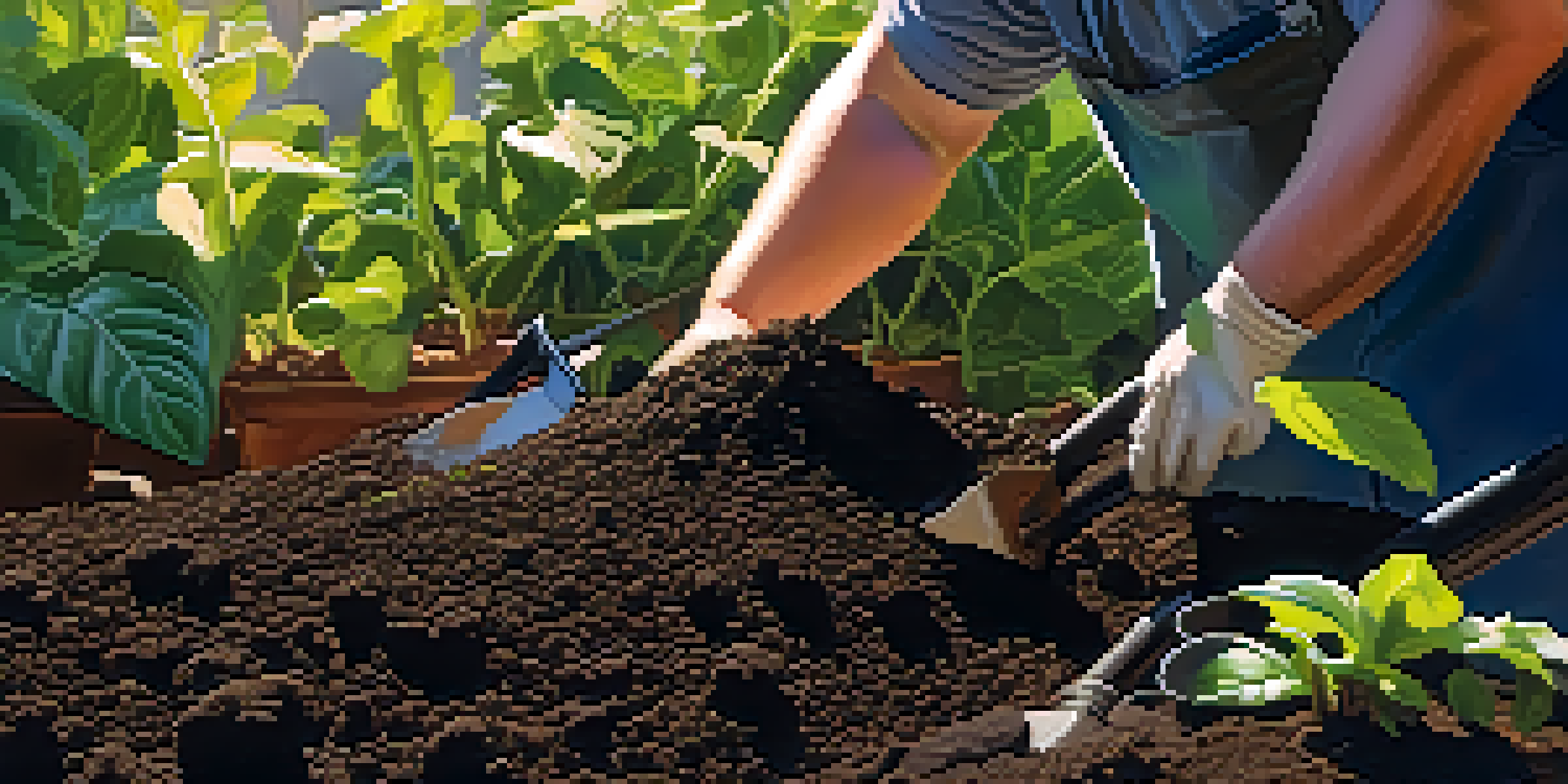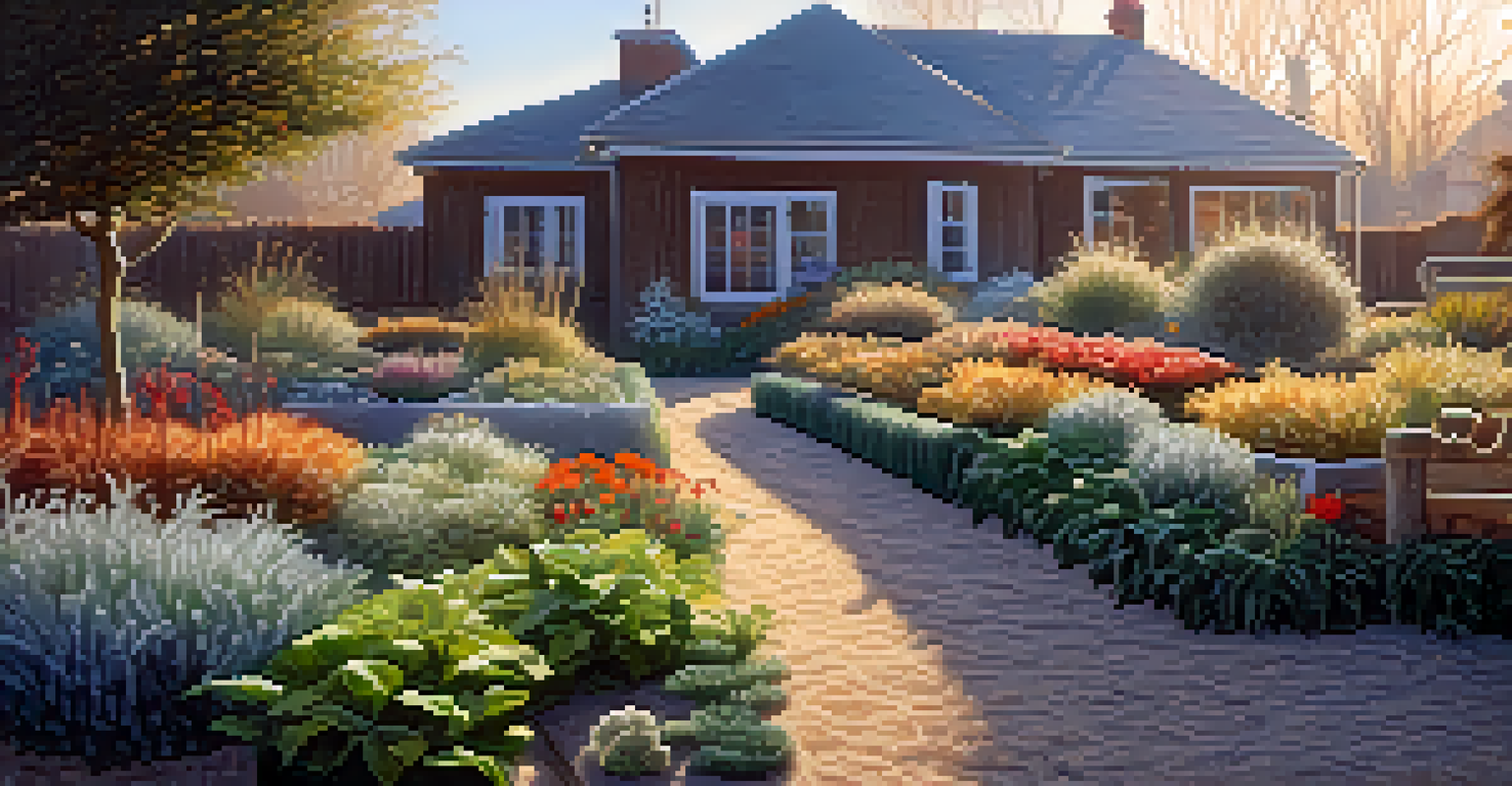Fall Gardening: Preparing Your Garden for the Winter Season

Understanding the Importance of Fall Gardening
As the leaves change color and temperatures drop, many gardeners wonder what to do next. Fall gardening is crucial because it sets the stage for a healthy garden come spring. By taking the time to prepare your garden now, you can protect your plants and enrich your soil for the upcoming growing season.
The garden is a love song, a duet between a human and the universe.
Think of it like getting your home ready for winter. Just as you’d insulate your pipes and check your heating, your garden needs attention too. When you properly prepare your garden in the fall, you’re ensuring that it can withstand the cold months ahead.
Moreover, fall gardening isn’t just about winterizing. It’s also about maximizing your garden’s potential by planting certain crops that thrive in cooler weather. So, let’s dive into some essential steps to get your garden winter-ready.
Clearing Out Debris and Weeds
The first step in preparing your garden for winter is to clear out any debris and weeds. Fallen leaves, dead plants, and invasive weeds can harbor pests and diseases, leading to problems when spring rolls around. By tidying up your garden, you create a clean slate for new growth.

Imagine your garden as a canvas; you want to start fresh each season. Raking up leaves and pulling out weeds is like sweeping away old paint, allowing you to begin anew. It’s a simple yet effective way to ensure a healthy garden next year.
Fall Gardening Boosts Spring Growth
Preparing your garden in the fall is essential for ensuring healthy plants and enriched soil when spring arrives.
This cleanup also allows you to inspect your plants for signs of disease or pests. Addressing these issues now can save you a lot of trouble later. So, roll up your sleeves and give your garden the attention it deserves.
Soil Enrichment: The Key to a Thriving Garden
After clearing out your garden, it’s time to focus on enriching the soil. Healthy soil is the foundation of a thriving garden, and fall is the perfect time to amend it. Adding organic matter, like compost or well-rotted manure, can restore nutrients that may have been depleted over the growing season.
To plant a garden is to believe in tomorrow.
Think of your soil as a bank account. Just as you’d deposit money to save for future expenses, adding nutrients to your soil prepares it for spring planting. This investment pays off in the form of stronger, healthier plants.
Additionally, consider conducting a soil test. This will help you understand the pH and nutrient levels in your soil, allowing you to tailor your amendments for optimal results. It’s a small step that can make a big difference.
Choosing the Right Plants for Fall Gardening
When it comes to fall gardening, selecting the right plants is crucial. Some vegetables, like kale, carrots, and Brussels sprouts, actually thrive in cooler temperatures. By planting these hardy varieties, you can enjoy fresh produce even as the weather gets chilly.
Imagine cozying up with a warm bowl of soup made from your home-grown vegetables on a cold winter evening. That’s the beauty of fall gardening; it can extend your harvest season. Plus, these plants are often more flavorful after experiencing a frost.
Clean Up for a Fresh Start
Clearing out debris and weeds in your garden creates a clean slate, preventing pests and diseases from lingering.
In addition to vegetables, consider planting cover crops. These plants protect your soil from erosion and replenish nutrients, making them a smart choice for fall gardening. They act like a protective blanket for your soil over the winter.
Mulching: Protecting Your Garden Through Winter
Mulching your garden is one of the best ways to protect it during the winter months. A layer of mulch helps insulate the soil, preventing it from freezing and thawing too quickly. This is especially important for tender perennials and young plants.
Think of mulch as a cozy blanket for your garden. It keeps the soil temperature stable and retains moisture, ensuring that your plants have a better chance of surviving harsh conditions. Organic mulches, like straw or shredded leaves, also break down over time, enriching the soil.
When applying mulch, aim for a thickness of about 2-4 inches. Be careful not to pile it too close to the stems of your plants, as this can lead to rot. With the right amount of mulch, your garden will be well-protected through the winter.
Watering: The Overlooked Fall Task
As temperatures drop, it’s easy to forget about watering your garden. However, fall is a critical time for moisture, especially for new plantings and perennials preparing for dormancy. Ensuring that your plants are well-hydrated now can help them weather the winter.
Consider this: just as you wouldn’t want to enter a long hibernation dehydrated, your plants need adequate water to survive. Aim to water your garden deeply but less frequently, allowing the roots to absorb moisture effectively.
Protect Plants with Mulching
Applying a layer of mulch insulates the soil, retains moisture, and protects your plants from harsh winter conditions.
As the ground begins to freeze, be mindful of your watering schedule. Watering in the early afternoon, when temperatures are slightly warmer, can help prevent the water from freezing on the soil surface. A little attention can go a long way in keeping your garden healthy.
Protecting Delicate Plants from Frost
Many gardeners worry about frost damage to their delicate plants. To safeguard them, consider using protective coverings like row covers or frost cloths. These lightweight materials trap heat and shield your plants from harsh winds, creating a more favorable microclimate.
Imagine wrapping your favorite sweater around your plants; it keeps them warm and cozy. Similarly, these coverings provide a protective barrier, allowing your plants to survive unexpected cold snaps.

For pots or containers, moving them closer to your home or into a sheltered area can also help. Remember, prevention is key; taking these steps now can save your plants from unnecessary stress during the winter months.
Planning for the Upcoming Growing Season
Finally, as you prepare your garden for winter, take some time to plan for the upcoming growing season. Reflect on what worked well this year and what didn’t. Making notes now will help you create a more successful garden next spring.
Think of this as drafting a blueprint for your garden. By mapping out your plant choices and layout, you can ensure that you’re ready to hit the ground running when the weather warms up. Plus, it gives you something to look forward to during the long winter months.
Don’t forget to research new plants or techniques you’d like to try. Whether it’s companion planting or experimenting with new varieties, planning ahead can spark your gardening creativity. With a little foresight, your garden can thrive like never before.